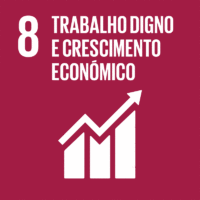Ciência_Iscte
Comunicações
Descrição Detalhada da Comunicação
Engaging age-diverse employees with job design: the roles of autonomy, feedback, and task variety
Título Evento
15th European Academy of Occupational Health Psychology Conference
Ano (publicação definitiva)
2022
Língua
Inglês
País
França
Mais Informação
Web of Science®
Esta publicação não está indexada na Web of Science®
Scopus
Esta publicação não está indexada na Scopus
Google Scholar
Esta publicação não está indexada no Overton
Abstract/Resumo
With the global population aging as never before (United Nations, 2019), workforces are becoming older and more age-diverse in most developed countries, with a steady increase in the proportion of workers aged 50 or over and a simultaneous decrease in the proportion of younger age groups entering the labor force (e.g., Eurofound, 2017; U.S. Bureau of Labor Statistics, 2006). With increasingly older and age-diverse workforces, organizations will need to redesign jobs to keep their workers engaged – i.e., physically, cognitively, and emotionally connected with their work roles (Khan, 1990). In the current research, we integrate lifespan development theories – specifically, socioemotional selectivity theory (Carstensen et al., 1999) and selection, optimization, and compensation theory (Baltes & Baltes, 1990) with job design (Hackman & Oldham, 1976) to investigate how certain job characteristics influence the work engagement of older and younger workers.
Specifically, in a two-wave field survey with age-diverse employees from multiple organizations (N=372), we explore how autonomy and feedback at work relate to engagement of older and younger workers, and how those relationships depend on the degree of task variety they have in their jobs. Results showed that both autonomy and feedback contribute more to the engagement of older employees when task variety is low than when task variety is high. Conversely, both autonomy and feedback contribute more to the engagement of younger employees when task variety is high than when task variety is low.
Our research responds to calls to re-investigate job design in the context of increased workforce aging (Grant et al., 2010) and to investigate the combined effects of multiple job characteristics on the work attitudes of older versus younger workers (Truxillo et al., 2012). The findings provide important theoretical implications for the study of job design and aging, and inform organizations on how they can (re)design their jobs to engage and leverage the potential of the multi-age workforce.
Agradecimentos/Acknowledgements
--
Palavras-chave
workforce aging,job design,feedback,autonomy,task variety,work engagement
Classificação Fields of Science and Technology
- Psicologia - Ciências Sociais
- Economia e Gestão - Ciências Sociais
Contribuições para os Objetivos do Desenvolvimento Sustentável das Nações Unidas
Com o objetivo de aumentar a investigação direcionada para o cumprimento dos Objetivos do Desenvolvimento Sustentável para 2030 das Nações Unidas, é disponibilizada no Ciência_Iscte a possibilidade de associação, quando aplicável, dos artigos científicos aos Objetivos do Desenvolvimento Sustentável. Estes são os Objetivos do Desenvolvimento Sustentável identificados pelo(s) autor(es) para esta publicação. Para uma informação detalhada dos Objetivos do Desenvolvimento Sustentável, clique aqui.

 English
English


